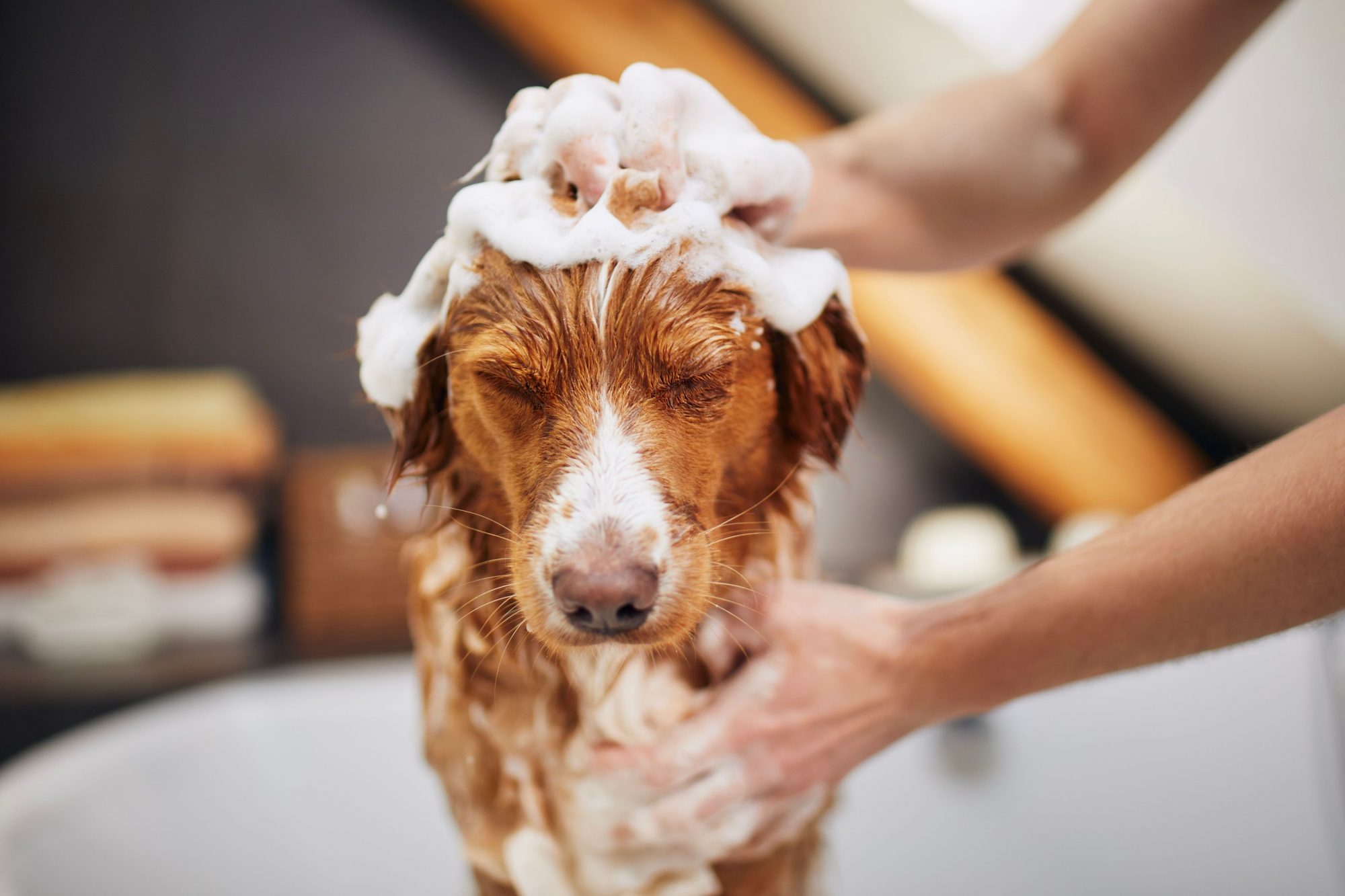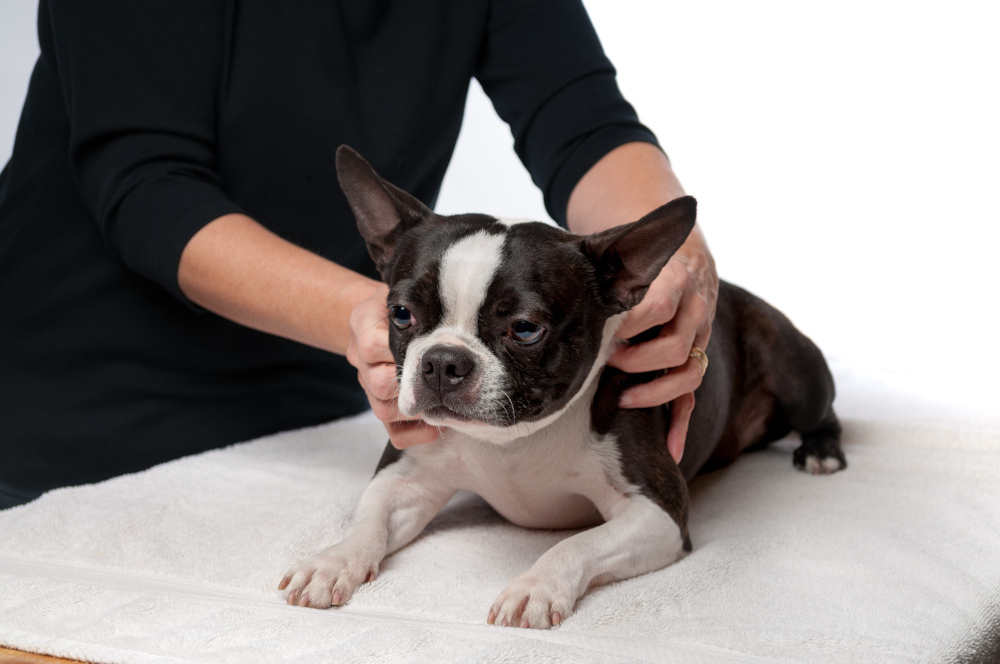The Ins and Outs of a Sedated Grooming

What Is Seating Grooming?
Sedated grooming involves administering mild sedation to ensure a smooth and stress-free grooming experience for both pets and groomers. Most pets can be professionally groomed without sedation. However, there are some who require this procedure.
Candidates for Sedated Grooming
Candidates for sedated grooming include pets that struggle with aggression, easily stressed and those who struggle with physical pain due to heavy matting.
What Does a Sedated Grooming Involve?
Sedated grooming is a medical procedure. It’s performed in our medical department under the direct supervision of our veterinarian and surgery technicians. It involves the same anesthetic protocols we use for sedating a pet for a spay/neuter, a mass removal or other surgical procedure. The pet will be fully unconscious and monitored by the medical team while being groomed by the groomer. Once the groomer is finished, the pet will be monitored while the effects of the sedation wear off. We contact the owner when the pet is ready to go home.
What Grooming Is Included?
A fully sedated, unconscious pet cannot be safely bathed or fully brushed because it will be lying on its side. As a result, the grooming session will not include a bath, a full brush out, or a breed-specific haircut. However, a complete shave down, nail trim, and ear cleaning can be performed. For certain dog breeds, a haircut or clipping may also be possible. However, it won’t be as precise as it would be if the pet were standing. We recommend discussing your pet’s specific needs with our groomer on what can be provided during a sedated groom.
Planning for a Sedated Groom
The first step in planning for a sedated groom is for the pet to be evaluated by our veterinarian. The evaluation will determine the extent of the anxiety issue and if sedation is needed. We will put together a sedation protocol based on the pet’s current health status. The sedation consultation is scheduled as a regular exam appointment and costs the same as a regular exam.
Since sedated grooming is a medical procedure, a consultation is vital. The veterinarian must ensure that it is safe for the pet to receive an anesthetic. At the end of the consult, a written estimate for the cost of the sedation procedure and grooming will be provided to you. Blood work may be required in some circumstances.
Scheduling the Grooming
Once you approve the sedated groom estimate, the grooming appointment can be scheduled. Our staff will assist you in selecting the nearest available date on both the grooming and surgery schedules.
Preparing Your Pet – Day Before
Fasting your pet is required for your pet to undergo sedation. Your pet will need to fast overnight and up to the time of the procedure. No food or treats after 8:00 pm the night before. Water is the allowed. In the morning, do not feed your pet. Allow only water.
On Grooming Day
When you arrive, our technician will review your pet’s sedation procedure and the estimate. You will be asked to read and sign both the estimate and an anesthesia consent form. Once completed, your pet will be brought into the medical department where it will stay until the sedation groom is completed and your pet is fully recovered. We will call you when your pet is ready to go home.
Sedated Grooming Costs
A sedated groom can cost several hundred dollars. It includes three separate services: (1) The initial sedation consultation with the veterinarian, (2) the sedation procedure provided by the medical team, and (3) the fee for the grooming services provided by the groomer.
Depending on the pet’s size, condition of the haircoat and the amount of time needed to complete the grooming, the total cost can be quite a surprise. It is best to discuss your pet’s needs with both the veterinarian and the groomer ahead of time, so you can make the best decision for your pet’s needs, and for yours.
Avoiding a Sedated Groom
Here are some ideas and recommendations on how to avoid a sedated groom:
Start Early
It’s important to expose your pet to a variety of situations and experiences at a young age. This includes baths and brushing. Gently rubbing its head, body, feet, and ears on a daily basis. Invite family members and your pet-friendly friends to participate.
Visits to the Veterinarian or Groomers
Get out and take your pet to new places. Expose your pet to visiting the veterinarian and groomers. If adopted at a later age, pace new experiences in accordance with how well your pet responds. Take your time and continue to work on it. Reacting calmly when handled by others is a valuable behavior skill that will benefit your pet all throughout its life.
Daily Brushing
For pets with hair longer than 1/2 inch daily brushing is essential. It helps prevent tangles and matting, and removes dirt and debris from your pet’s coat. It also reduces the likelihood of needing to shave your pet due to heavy matting.
Socializing Your Pet
Learning to get along with unfamiliar people and pets is an another important social skill. Being comfortable and confident around others makes for a happier, well-adjusted pet. It allows you to take your pet to new places and experiences without the worry of inappropriate reactive behaviors. Not all pets are naturally social. Developing this skill may require some time and effort. Supervised group play with other pets of similar size and age is a great way to nurture appropriate interactions.
Seek Professional Help
When home de-sensitization techniques aren’t enough, getting help from a professional behavior specialist can make a big difference. This will most likely involve more than one training session and things to work on at home, but will also provide the benefit of a professional evaluation and customized training geared specifically for your pet’s behavioral needs. Our pet behavior specialist offers both private sessions and small group classes that help pets learn socialization skills.
Senior Pets
Just as we change as we age, so do our pets. Aging for senior pets can bring a gradual loss of the senses – such as hearing, sight, and physical strength – which can cause heightened fear or anxiety when the pet is in an unfamiliar setting or around unfamiliar people. Maintaining your pet’s socialization skills is key to helping it deal with both old and new experiences – regardless of your pet’s limitations. Daily interaction and activity with your pet is key to keeping it socially engaged in our human world.
If you need additional information about a sedated groom or grooming in general, please do not hesitate to contact us.



